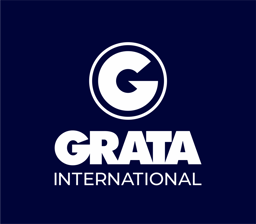
Kazakhstan


Azizov & Partners

Baker & McKenzie - CIS, Limited

Curtis, Mallet-Prevost, Colt & Mosle LLP

Dentons

GRATA International

Kinstellar LLP
KPMG Law

Morgan, Lewis & Bockius LLP

Olympex Advisers LLP

Regatta Consult LLP

Synergy Partners Law Firm LLC

TKS Disputes

Unicase Law Firm

Vakhidov & Partners

Verum LLP

White & Case Kazakhstan LLP
News & Developments
ViewPress Releases
Regulation of Clinical Trials in the Republic of Kazakhstan
What is a clinical trial?
A clinical trial (“CT”) is a study involving human subjects, conducted to identify or confirm the safety and effectiveness of means, methods, and technologies for the prevention, diagnosis, and treatment of diseases.
What types of CTs are there?
A non-interventional CT is a study which is conducted after the state registration of a medicine or medical device (“MD”) and is prescribed as part of medical practice.
An interventional trial is a study involving a human subject in which a researcher-physician assigns a specific intervention to the subjects based on an interventional CT protocol which complies with the CT procedure.
Is a notification/permission required to conduct clinical trials?
To conduct an interventional CT of a medicine, it is necessary to obtain a permission from the Committee for Medical and Pharmaceutical Control of the Ministry of Healthcare of the Republic of Kazakhstan.
Before obtaining the permission, it is necessary to obtain a conclusion on the results of the examination of the CT materials from the National Center for Expertise of Medicines and MDs, as well as a conclusion on the results of the bioethical examination of the CT materials from the Central or Local Bioethics Commission.
For non-interventional CT notification is required.
For non-interventional CT, it is necessary to obtain a conclusion based on the results of a bioethical examination of the CT materials from the Central or Local Bioethics Commission.
In the Republic of Kazakhstan (“RK”), the main legal acts regulating CT are:
The Code of the RK dated July 7, 2020 No. 360-VI "On Public Health and the Healthcare System"
Defines the legal bases for regulating and conducting CT of Medicines, MDs, and clinical laboratory tests of MDs for diagnostics outside a living organism (in vitro).
Rules of Good Clinical Practice of the Eurasian Economic Union, approved by the Decision of the Council of the Eurasian Economic Commission of November 3, 2016 No. 79
Establish international ethical and scientific standards for planning and conducting studies involving human subjects, as well as for the documentation and presentation of the results of these studies.
The Standard of Good Clinical Practice (GCP), approved by the Order of the acting Minister of Healthcare of the RK dated February 4, 2021, No. ҚР ДСМ-15)
Establishes rules for conducting studies involving human subjects, as well as for the documentation and presentation of the results of these studies.
ISO 14155:2014, Recommendation of the Board of the Eurasian Economic Commission of September 4, 2017, No. 17: CT of MDs involving human subjects. Good clinical practice.
Establishes provisions for good clinical practice for the planning, conduct, documentation, and reporting of results of CT involving human subjects to evaluate the safety or performance of MDs.
Rules for Сonducting СT of Medicines and MDs for In Vitro Diagnostics and Requirements for Clinical Sites and for the Provision of the Public Service "Issuance of Permission to Conduct CT and/or Testing of Pharmacological and Medicinal Products, MDs, approved by order of the Minister of Healthcare of the RK dated December 11, 2020 No. ҚР ДСМ-248/2020
Establish the procedure for conducting CTs of Medicines and MDs, clinical laboratory tests of MDs for diagnostics outside a living organism (in vitro) and requirements for clinical bases.
Key regulatory bodies
Ministry of Healthcare of the RK
The Committee for Medical and Pharmaceutical Control of the Ministry of Healthcare of the RK
Issues permission to conduct CT and/or testing of pharmacological and medicinal products, MDs;
Conducts CT inspections.
National Center for Expertise of Medicines and MDs
Conducts an examination of CT materials and issues a conclusion on the conduct of CT.
Central Commission on Bioethics
Conducts a bioethical examination of CT materials and issues opinions on the conduct of interventional CT of foreign-produced medicines and MDs, as well as interventional and non-interventional CTs of Medicines and MDs conducted in two or more research centers located in the territory of the RK.
Local Bioethics Commission
Conducts a bioethical examination of materials of single-center interventional and non-interventional CTs, with the exception of cases of interventional CTs of Medicines and MDs produced outside the RK.
What are the requirements for clinical sites?
The requirements for clinical sites:
availability of a license to carry out medical activities;
availability of standard operating procedures for conducting CTs;
availability of clinical, instrumental and laboratory equipment for conducting CTs or availability of contracts with contractors for the provision of specialized clinical, instrumental, laboratory and auxiliary services for conducting CTs (in the absence of the necessary equipment);
availability of personnel with medical education and a GCP training document;
availability of conditions for intensive care and resuscitation (if required by protocol);
availability of a document establishing the procedure for working with confidential information.
GCP and ISO14155:2014 standards set more detailed requirements for clinical sites.
Are there any CT inspections in the RK?
Inspections are carried out by the Committee for Medical and Pharmaceutical Control of the Ministry of Healthcare of the RK in accordance with the Rules for Conducting Pharmaceutical Inspections on Good Pharmaceutical Practices, approved by Order No. ҚР ДСМ-9 of the Minister of Healthcare of the RK dated January 27, 2021.
The objectives of the inspection are the following:
assessment of compliance with GCP and ISO 14155:2014 standards;
confirmation of compliance of the CT with the approved CT protocol;
confirmation of the reliability of the data obtained as a result of CTs;
investigation of complaints (signals) received with regard to the CT, as well as upon receipt of additional information about the risk associated with conducting the CT;
protection of the rights, health and well-being of the subjects of CTs.
Inspection is carried out at any stage of the CT in a planned (primary) or unscheduled manner (including in connection with a threat or harm to the life or health of trial subjects).
The Ministry of Healthcare of the RK, based on the inspection data, makes a decision on:
termination of CT;
recognize the results of the CT.
What are the requirements for participation in the CT?
The need to obtain informed consent:. Before inclusion in the CT, the trial subject or their legal representative shall receive the information about the planned CT, on the basis of which the trial subject or their legal representative signs the informed consent for voluntary participation in the trial.
Restrictions on participation in CTs for certain categories of persons: CTs of medicines and MDs on minors, pregnant women, incapacitated individuals, students, pensioners, and those requiring assistance are conducted only to study the therapeutic effect and with the consent of a relative, guardian, or parent.
Prohibition of participation in CTs for certain categories of persons: interventional CTs on military, law enforcement and special government agencies’ personnel, employees of medical organizations where biomedical research is conducted, and persons held in penal institutions are prohibited.
What constitutes the result of the CT?
The result of the CT is the final report on the conducted CT of medicines and MDs, regardless of whether the trial was completed or terminated early.
No later than 1 year after the full completion of the CT (in case of international CTs, after the completion of the CTs in all countries), the sponsor provides brief information about the CT to the Committee for Medical and Pharmaceutical Control of the Ministry of Healthcare of the RK and the Central Bioethics Commission which issued the permission to conduct the CT.
The sponsor and the investigator archive the materials (documents) of the CTs and ensure their safety for 25 years from the date of completion of the CT.
As of the publication date of this alert, the draft regulations on CT are under public discussion; therefore, further amendments may be introduced.
Vakhidov & Partners - December 10 2025
Press Release
KPMG Caucasus and Central Asia Launches China Desk, offering tailored services to Chinese business across the region
June 2025
KPMG Caucasus and Central Asia (KPMG CCA) announces the launch of its China Desk Service — a dedicated platform designed to support Chinese enterprises interested in investing or already operating in the region.
The China Desk is led by Ms. Meir Tlebalde, who joins KPMG CCA as Director. Ms. Tlebalde brings over 19 years of professional experience in China capital cross-border investment, infrastructure and real estate development, industrial site selection, market entry strategies and post-investment management.
Operating from KPMG’s regional platform, the China Desk will serve clients active or entering markets in Kazakhstan, Uzbekistan, Kyrgyzstan, Tajikistan, as well as in Azerbaijan, Armenia and Georgia.
Key areas of focus will include market entry, legal and tax structuring, deal advisory and valuation support, licensing and incorporation services, M&A and joint venture formation, as well as post-investment integration — including tax compliance, audit, accounting, HR and legal advisory.
According to Meir Tlebalde, Director of China Desk at KPMG CCA “Our team understands the context of transactions and the concerns that Chinese investors typically face. We work across jurisdictions to ensure clarity, efficiency, and commercial value at every stage.”
This specialized desk will work closely with the KPMG Global China Practice, leveraging its extensive global network and expertise. Headquartered in Beijing, KPMG's Global China Practice comprises dedicated teams in nearly 60 locations worldwide. These teams cover both developed markets like Europe, the USA, and Australia, and emerging economies such as Central Asia, Southeast Asia, the Middle East, Latin America, and various nations participating in the "Belt and Road" initiative. Read more about KPMG Global China Practice here.
Lisa Li, KPMG Global China Practice Lead commented: “KPMG has successfully assisted Chinese companies in completing numerous landmark outbound mergers and acquisitions as well as greenfield investments. The newly established KPMG CCA China Desk joining our Global China Practice network will significantly enhance KPMG’s capabilities to serve Chinese clients in Caucasus and Central Asia, and we will leverage this strength to further assist Chinese companies in their pre and post – investments activities and support Chinese companies with their localisation.”
With its sector-based focus and fully integrated service model, the China Desk will help clients navigate local markets with confidence. Investors benefit from access to industry benchmarks, actionable insights, and optimized operating models.
毕马威高加索及中亚地区中国事业部正式成立
-旨在为本地中资企业提供定制化专业服务
2025年6月
毕马威高加索及中亚地区(KPMG CCA)宣布正式成立中国事业部(China Desk)——该部门旨在专项为有前期意向或已在本地区落地经营的中资企业提供全方位一站式咨询服务。
中国事业部由梅叶尔女士担任总负责人。梅叶尔女士在跨境资本投资、基建与房地产开发、工业选址、市场进入战略及投后管理领域拥有逾19年专业经验,她的加入将进一步强化毕马威在服务中国客户方面的承接能力。
依托毕马威区域化服务平台,中国事业部将辐射哈萨克斯坦、乌兹别克斯坦、吉尔吉斯斯坦、塔吉克斯坦,以及阿塞拜疆、亚美尼亚和格鲁吉亚等重要战略市场,为在营及新进入企业提供以下核心服务:
• 市场准入战略咨询
• 法律架构与税务筹划
• 交易顾问与估值支持
• 特许经营及公司注册
• 并购与合资企业设立
• 投后整合管理(涵盖税务合规、审计、会计、人力资源及法律咨询)
毕马威高加索及中亚地区中国事业部负责人梅叶尔女士表示:"我们深刻了解中资企业在跨境投资中的各种交易场景与典型风险痛点,因此通过提供整合式的综合服务产品,我们可以确保中国企业在投资流程中的每个环节都享有决策的透明、执行的效率与投资的良好回报。"
中国事业部专业团队将与毕马威全球中国业务总部紧密协作,充分整合全球网络资源与专业项目经验。毕马威全球中国业务总部设于北京,在近60个国家和地区设有专项服务团队,覆盖欧美澳等成熟市场及中亚、东南亚、中东、拉美等"一带一路"新兴经济体。[点击了解更多毕马威全球中国业务]
毕马威全球中国业务主管合伙人李丽莎(Lisa Li)强调:"毕马威已成功协助中资企业完成多宗具有里程碑意义的海外并购与绿地投资。高加索及中亚中国事业部的加入,将显著提升我们服务该区域中资客户的能力。我们将充分发挥这一优势,在投资全周期赋能中企本地化运营。"
凭借行业聚焦的服务定位与全链条整合式服务模式,中国事业部将助力客户精准把握区域市场机遇。投资者可获得:
• 行业基准数据分析
• 可落地的战略洞察
• 最优化的运营模型
KPMG Law - November 11 2025
Kazakhstan employment regulations on executive body dismissal
Nurzhan Stamkulov, Ali Dautalinov, Assem Zhaksylykbayeva
Lawyers, Synergy Partners Law Firm LLC
In this article we prepared an overview of the regulations related to executive body dismissal in limited liability company in Kazakhstan. This issue combines two practice areas: employment legislation and corporate legislation.
Kazakhstan employment legislation
Article 52.23 of Kazakhstan Employment Code stipulates that an employer may terminate the employment agreement in unilateral manner with an executive body of a company in compliance with corporate legislation.
Kazakhstan corporate legislation
In accordance with article 43.2.2 of the Act on limited liabilities companies[1] a sole shareholder or general meetings of shareholders of a company could terminate employment agreement with the executive body on any date without any conditions.
The executive body could be named in any manner: director, president, general manager or chief executive officer[2].
In dismissal procedure of a CEO, following questions arise:
How does an employer should do properly in order to dismiss a director or CEO?
What are mandatory compensations an employer must pay during dismissal procedure?
What is the methodology or rules for paid compensation during dismissal procedure?
Based on our practice, we will provide short answers to these questions.
Please note that during executive body dismissal procedure corporate law provisions will be prevail, while an employment law practice should be additional procedural regulations.
CEO's dismissal procedure
A company may terminate an employment agreement with CEO and replace the CEO at any time.
To do so, a company shall issue the following documents:
a general meeting of Shareholders / a Sole Shareholder’s resolution on the dismissal of the CEO.
a notice of termination to an employee.
an order for termination of the employment agreement.
In accordance with article 61.3 Kazakhstan Employment Code an employer gives an employee a copy of the dismissal order or sends it by email within three business days from the date of such order has been issued.
Mandatory compensation for unused days of annual paid leave for any employee dismissal
According to article 96.2 of Kazakhstan Employment Code, once an employment agreement is terminated, an employer must pay compensation to an employee for any unused days of annual paid leave.
If an employee has fully used annual paid leave, no compensation will be paid by an employer at the date of termination of an employment agreement.
Calculation of compensation for unused days of CEO’s annual paid leave
Please note that amount of compensation for unused annual paid leave must be calculated in accordance with the following acts:
Rules for calculating average salary[3] (hereinafter – the Rules); and
Methodological recommendations for calculating average salary[4] (hereinafter – the Methodology).
The compensation shall be based on an employee’s average daily salary[5].
Period for calculating a CEO’s average salary is 12 months.
According to article 114.2 of Kazakhstan Employment Code and articles 2.2 of the Rules, the average salary must be calculated based on the previous 12 calendar months.
Any paid bonuses shall be included in a CEO’s average salary calculation
An employee’s average salary calculation must include a fixed salary and bonuses for work results[6].
Financial assistance, health improvement and treatment allowance, payments not related to work results should not be included in the employee’s average salary calculation[7].
CEO’s annual paid leave days
Kazakhstan Employment Code stipulates 24 calendar days for annual paid leave[8]. But Kazakhstan Employment Code also allows an employer to grant additional days for annual paid leave.
If there were no acts or resolutions on additional leave days, a CEO has standard 24 days of annual paid leave.
CEO’s average daily salary
According to article 8 of the Rules, an employee’s average daily salary is equal to the sum of fixed salary and bonuses for the last 12 months divided by working days for the last 12 months.
For example, a CEO earned 250,000 Euro over the past 12 months (including bonuses). There were 246 business days from January 2024 to January 2025.
In this case a CEO’s average daily salary will be about 1,016 Euro (= 250,000 Euro / 246 business days).
Compensation for unused annual paid leave
According to articles 15 and 7 of the Rules, compensation for unused annual paid leave is calculated by multiplying an employee’s average daily salary to the number of working days while unused days goes by after dismissal.
For example, a CEO used 10 days out of 24 of annual paid leave. This means a CEO must receive compensation for the 14 unused days of annual paid leave.
In this example, compensation for unused annual paid leave will be 14,224 Euro (= 1,016 Euro * 14 business days).
Compensation for a CEO dismissal stipulated by Kazakhstan Employment Code
Kazakhstan Employment Code doesn’t specify any compensation for the CEO dismissal.
However, Kazakhstan Employment Code says that an employment agreement could have any provisions stipulated by parties regarding compensations.
We recommend checking provisions of each employment agreement for any obligations related to compensation due to early termination. If a company has other acts, policies, internal regulations, we recommend checking them also.
[1] Article 43.2.2 of the Act on limited liabilities companies dated April 22, 1998 No. 220-I
[2] Article 51.1 of the Act on limited liabilities companies dated April 22, 1998 No. 220-I
[3] Unified rules for calculating average salary approved by Order of the Minister of Health and Social Development of the Republic of Kazakhstan dated November 30, 2015, No. 908.
[4] Methodological recommendations on the application of the Uniform Rules for calculating the average salary, approved by the Order of the Minister of Health and Social Development of the Republic of Kazakhstan dated November 30, 2015 No. 908 Approved by the Vice Minister of Health and Social Development of the Republic of Kazakhstan Nurymbetov B.B. on February 25, 2016
[5] Artilce 96.2 of Kazakhstan Employment Code, Articles 15 and 7 of the Rules
[6] Article 6 and 14 of the Rules
[7] Article 6 of the Rules and Appendix to the Rules
[8] Article 88 of Kazakhstan Employment Code
Synergy Partners Law Firm LLC - August 21 2025
Kazakhstan employment regulations on maternity leave
Kazakhstan employment regulations on maternity leave
Nurzhan Stamkulov, Ali Dautalinov, Assem Zhaksylykbayeva
Lawyers, Synergy Partners Law Firm LLC
Kazakhstan employment regulations provide for:
a) mandatory maternity leave by law; and
b) optional unpaid leave to care for a child until the child reaches the age of 3.
For employers it is important to consider the duration of maternity leave granted to employees and calculations of payments.
In this article, we tried to cover answers to questions related to maternity leave and unpaid leave.
The duration of maternity leave granted to employees by law
In accordance with article 99.1 of Kazakh Employment code a pregnant woman applies for maternity leave by submitting a medical certificate indicating the starting date when a woman will not attend the office/place of job.
The law allows women to take leave and not visit place of job not only before childbirth, but also after the childbirth with guaranteed minimum days.
The duration of maternity leave depends medical conditions of a woman.
For convenience, please see the table for duration of maternity leave.
Situations for maternity leave
Minimum days when a woman will have leave during pregnancy
Minimum days when a woman will have leave after a childbirth
Usual situation for a woman
70 days
56 days
A situation where a woman has complicated childbirth or the birth of 2 or more children
70 days
70 days
A situation where a woman was born or lived in nuclear contaminated area
91 days
79 days
A situation where a woman was born or lived in nuclear contaminated area — complicated childbirth or the birth of 2 or more children
91 days
93 days
If a woman has early childbirth on 22-29 weeks from the pregnancy date
and
a child is born with a body weight of 500 grams or more
and
if a child has been lived more than 7 days
The law does not provide leave. In practice the employer provides unpaid leave for days required to recover based on medical prescriptions or medical recommendations
70 days
93 days for woman was born or lived in nuclear polluted area
56 days, if a child lived less than 7 days
An employer must consider all relevant facts and medical conditions of the pregnancy when calculating the total duration of maternity leave. We recommend asking the pregnant employee for the necessary details.
Due to outdated legal provisions and limited social coverage for maternity leave, in practice most companies try to continue paying a woman the same salary during pregnancy and for six months after the child’s birth.
State social payments are made to pregnant women starting from the seventh month of pregnancy, as well as childcare payments until the child reaches 1.5 years of age. In practice, these amounts are very low, and employers often provide additional payments to bring the employee’s income closer to her regular monthly salary.
Employee’s payments during maternity leave
Please note that Kazakhstan employment law regulations indicate that an employer is free of any obligations to pay salary during maternity leave, unless it is stipulated by an employment agreement.
In accordance with Article 99.4 of the Kazakhstan Employment Code, an employer may provide payment for maternity leave if this is stipulated in the employment contract, collective agreement, or the company’s internal policies.
Usually in standard employment agreements there are no provisions related to any additional payments or an employers’ obligations to pay during maternity leave.
State payments during maternity leave
During maternity leave, Kazakhstan state authorities will pay social payments to a woman in maternity leave during such 4 month that is about and rounded to average monthly salary calculated in accordance with Rules for calculating average salary[1].
The article 77.1 of the Kazakhstan Social Code stipulates that female individual must receive state payments from the State Social Insurance Fund (SSIF) or payments from the state during the maternity leave in any cases.
This means an employee in case of maternity and pregnancy must receive social payments from state SSIF in any case.
State social payments are calculated according to Rules for calculating the social benefits in connection with pregnancy and childbirth[2].
We recommend skipping details on any state social payments, as it is a state obligation.
Additional social payment regarding maternity leave
In practice many companies try not only to follow employment law standards, but instead try to cover and pay additional payments related to maternity leave:
an employer allows women to take maternity leave from the 4 months of pregnancy.
although a woman receives social payments during maternity leave, an employer during a woman’s pregnancy pays the same average monthly salary from 4 months before childbirth and 6 months after a childbirth.
It is important to note, that Employment regulations set only minimum guarantees, that could not be lower that state standards. However, an employer could apply any higher standards and pay more by its own discretion.
This approach requires that an employer will issue special order, and any amendments to an employment agreement are not required. An employee must read such order and sign that she is informed about such order. These steps are sufficient, enough for an employer.
In practice, we recommend considering medical conditions on pregnancy, medical history and records and other facts of the woman who gave birth or in the pregnancy period.
[1] Unified rules for calculating average salary approved by Order of the Minister of Health and Social Development of the Republic of Kazakhstan dated November 30, 2015, No. 908.
[2] Rules for calculating the social benefits in connection with pregnancy and childbirth, approved by the Order of the Deputy Prime Minister - Minister of Labor and Social Protection of the Population of the Republic of Kazakhstan dated June 27, 2023, No. 248
Synergy Partners Law Firm LLC - August 18 2025
